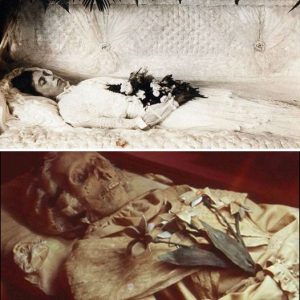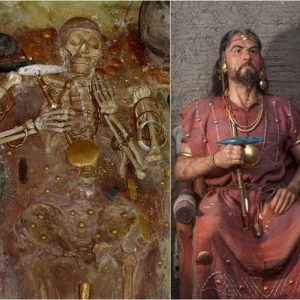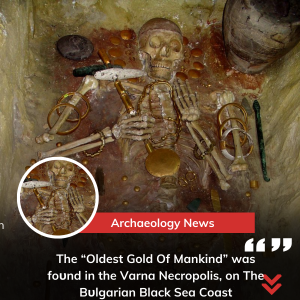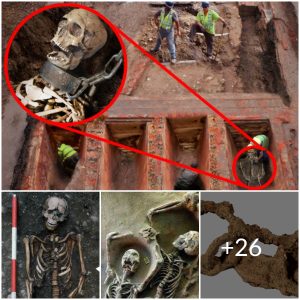Tyrannosaurus or tyrant dinosaur is the most famous ancient dinosaur, and scientists’ research on them has never stopped. Not long ago, paleontologists published a new study on Tyrannosaurus rex, reconstructing the growth chain of this creature and discovering important stages in the growth process of Tyrannosaurus rex.
The paleontologist leading the research is Dr. Thomas D. Carr from Carthage College who has been researching Tyrannosaurus rex since 2004. At first, the research documents only had 5 Tyrannosaurus rex specimens and the number of fossils. very limit. Based on these fossils, Carr listed the characteristics of 84 growth variables for Tyrannosaurus rex. After that, he exposed more and more fossils of this creature, and eventually reached 31 specimens, and the growth characteristics related to Tyrannosaurus rex were also explored more.

Based on the characteristics of giant growth variables, the research team obtained a highly accurate growth sequence of Tyrannosaurus Rex and divided the life cycle of Tyrannosaurus Rex into 21 stages and 6 periods:
Early stage – Small Juveniles, includes 4 stages, ages from 0 to 12 years old.
The second period – Large Juveniles, consists of 1 stage, with a lifespan of 13 years.
The third period – Subadults, includes 2 stages and ages from 14 to 17 years old.
The fourth period – Young Adults, includes 5 stages, ages from 18 to 22 years old.
The fifth period is the adult period (Youth), including 8 stages, ranging in age from 23 to 27 years old.
The sixth period – Senescent Adults, includes 1 stage, the age is from 28 years old.

The growth sequence chart includes 21 stages of the tyrannosaur.
After obtaining the growth sequence, paleontologists conducted further research and discovered that there were two important stages in the development of Tyrannosaurus rex: the sixth stage, equivalent to when Tyrannosaurus was 15 years old. During this short year, the skull morphology of Tyrannosaurus rex would change significantly. The long, narrow skull and lower jaw would have become thicker and wider, and the teeth would also have become thicker, beginning to take on the characteristics of the skull of an adult Tyrannosaurus. The following stage is the eighth stage, equivalent to when Tyrannosaurus rex was 18 years old. This is the stage when Tyrannosaurus enters adolescence, which is the beginning of puberty, and will weigh about 3 tons. This weight represents the official transformation of Tyrannosaurus rex into a giant, powerful super-predator, and its weight will quadruple over the next ten years.

Comparison of adult and juvenile Tyrannosaurus rex skulls.

Previously, paleontologists believed that the larger the size of the tyrannosaur, the older it was. But in fact, size was really just one of many characteristics that changed during the developmental sequence of Tyrannosaurus rex, so the method of judging age solely by body size is really unreliable. Because this can easily cause confusion between young but well-developed individuals and adults.

In 2019, Canadian paleontologists announced that they had discovered the largest tyrannosaur known to mankind, naming it “Scotty”. Research believes that this tyrannosaur could have been up to 13 meters long and weighed 8.8 tons. Of course, many paleontologists have questioned its true size, because the completeness of this Tyrannosaurus rex fossil is only 65%.
Having said that, it is because of its enormous size that paleontologists believe that “Scotty” is a very old tyrannosaur, must be more than 30 years old. Through analyzing the growth sequence of Tyrannosaurus rex, especially comparing many different characteristics, Thomas D. Carr’s research team believes that there is no absolute relationship between the size of Tyrannosaurus rex and its age. . And through analysis, the exact age of “Scotty” In fact, it is only in the 5th period, between the ages of 23 and 27.


Re-determination of age of “Scotty” demonstrates the advantage of the growth chain in fossil research. Carr’s team studied Tyrannosaurus rex, but they also studied another very controversial Tyrannosaurus, the dwarf tyrannosaur (Nanotyrannus). Dwarf tyrannosaurs were also found in the Hell Creek strata with two specimens with codes: CMNH 7541 and BMRP 2002.4.1.

CMNH 7541.

BMRP 2002.4.1.
Paleontologists compared the features collected on fossil records of dwarf tyrannosaurs with the growth sequences of Tyrannosaurus Rex and found that these features were completely consistent, meaning Dwarf tyrannosaurs actually did not exist, they were just young individuals of Tyrannosaurus Rex. Specific to each specimen, CMNH 7541 belongs to an approximately 10-year-old Tyrannosaurus Rex individual, while BMRP 2002.4.1 is slightly older and belongs to a 13-year-old individual.

When Carr introduced the growth and development cycle of Tyrannosaurus rex, he pointed out that growth characteristics were also an important part of phylogeny. “We found that young and immature Tyrannosaurus rex display ancestral characteristics, while adult individuals gradually lose those characteristics. It is the link between evolution and growth. In a similar way, these traits can be used to simulate individual development or reproduce the development of a population. The developmental trends of Tyrannosaurus rex can also be compared with other dinosaurs to determine which trends were inherited from ancestors and which developed independently”.
In addition, Carr and his research team tried to distinguish the sex of tyrannosaurs by growth sequences, but after carefully reviewing the data of different individuals, they could not find any evidence. Symptoms can differentiate between sexes. This means that male tyrannosaurs and female tyrannosaurs had no differences in developmental levels such as teeth and bones. Therefore, growth sequences cannot be used to determine the sex of Tyrannosaurus rex.

Currently, the only way we can evaluate the sex of a Tyrannosaurus rex is the marrow bone. This structure exists only in the bones of pregnant tyrannosaurs. Its function is to provide calcium for eggshell formation. Marrow bones have only been found in “B-rex” tyrannosaur fossils, which also proves that this individual was not only female but also pregnant.

B-rex femur with a length of 1.15 meters.

Cross-sectional view of the femur of a Tyrannosaurus rex, where MB refers to the medullary bone.
The reconstruction of the growth sequence of Tyrannosaurus rex provides new basic information for the study of this famous dinosaur, especially its growth and evolution process. Based on the growth sequence, we can use its material to study Tyrannosaurus rex from different angles and levels, and gain new knowledge about Tyrannosaurus rex.





